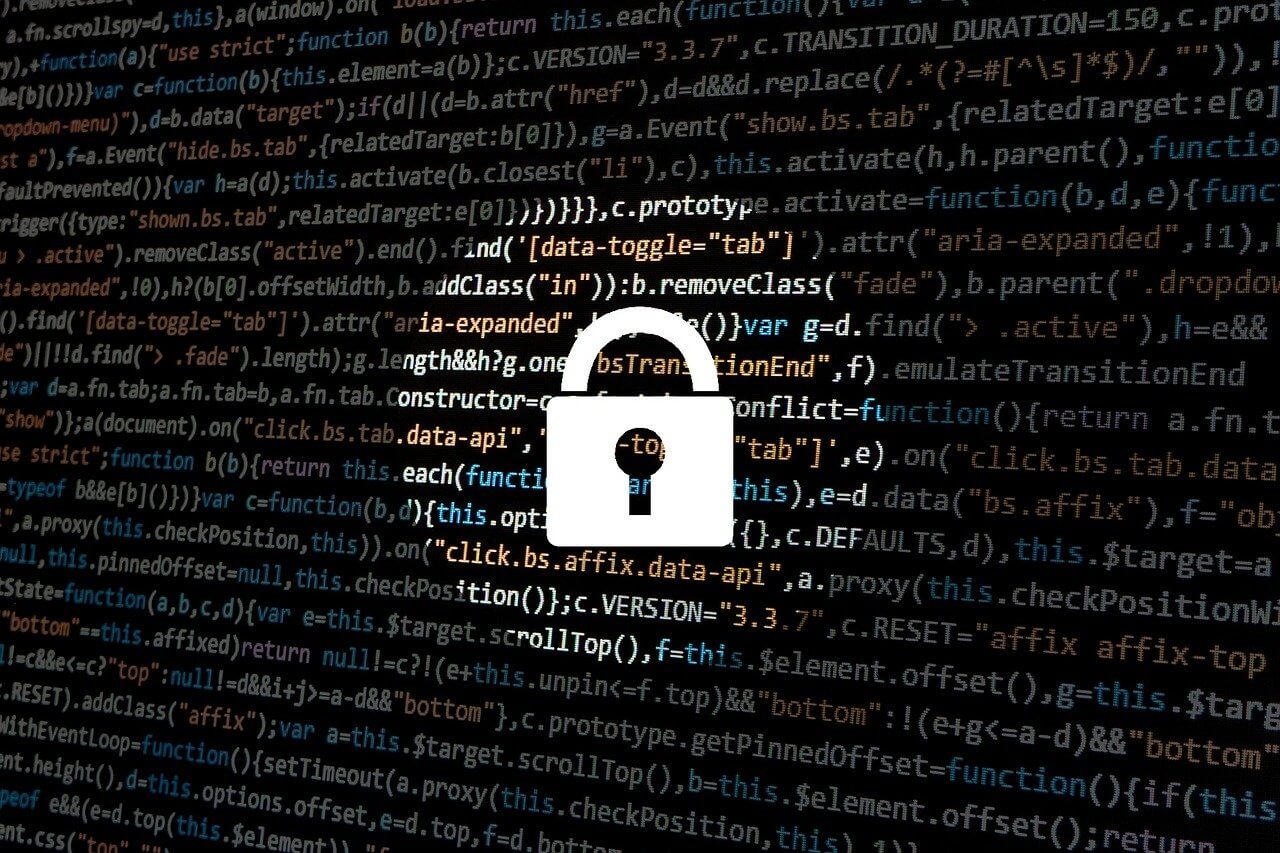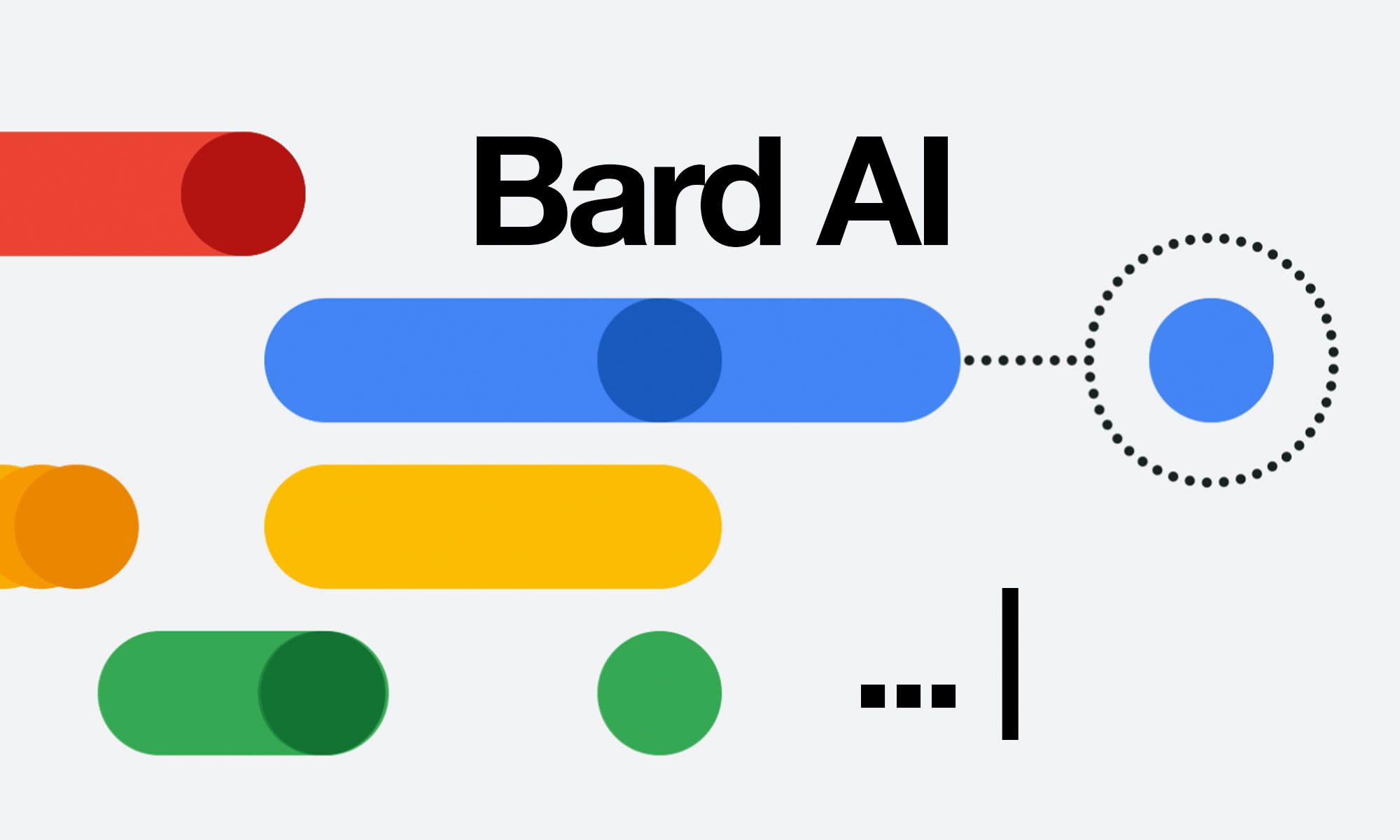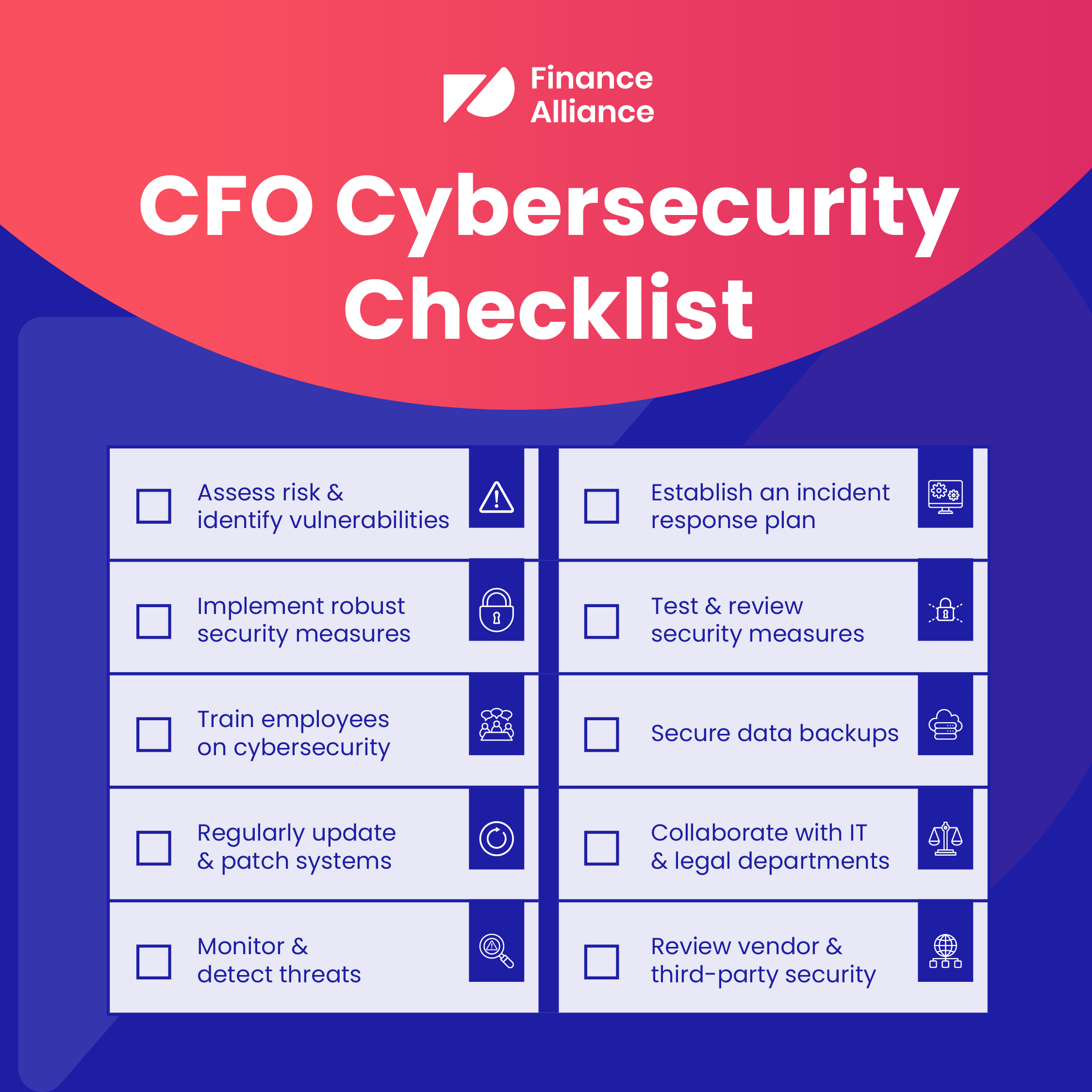From crunching numbers to combating cyber threats, the role of the CFO has leaped into uncharted territory, making CFO cybersecurity one of the hottest topics in boardrooms across the globe.
And it’s not a surprise considering for a whopping 83% of companies, it's not a question of if a data breach will happen, but when. So, what role does the CFO play in cybersecurity, if any?
You’ll find out in this blog post, where we talk about why the CFO is vital in protecting the financial security of a business. Don't forget to grab your free CFO cybersecurity checklist.👇
Topics covered:
- The CFO's role in cybersecurity
- The current state of cybersecurity
- How CISOs and CFOs can work together
- Types of data breach
- Advantages and disadvantages of cybersecurity
- How cybercriminals attack companies
- Your free CFO Cybersecurity Checklist
The role of the CFO in cybersecurity
Financial data is prime bait for cybercriminals and CFOs must be on their toes, keeping up with the latest IT security systems, understanding complex legal frameworks, and integrating new tech and data across the company.
You see, CFOs aren't just about numbers and spreadsheets anymore. They're now the digital gatekeepers at the forefront of safeguarding a company’s financial data and digital assets.
Apart from keeping the company financially healthy, CFO cybersecurity measures can also include sourcing the best digital defenders and making sure the company's virtual walls are impenetrable.
Thankfully, CFOs don’t hold this responsibility alone. It’s a team effort and the CFO will often work alongside other colleagues to help ensure data is kept safe. This often includes roles like:
- Chief Information Officer (CIO)
- Chief Technology Officer (CTO)
- Compliance and Risk Officers (CSRO)
- General Counsels
- Internal Audit teams
- Chief Information Security Officer (CISO)
- HR, and Operations
Each one plays a role in this intricate game of cyber defense.

The current state of cybersecurity
The first thing you need to know about the existing state of the cybersecurity universe is the fact it’s evolved. Like chameleons, attackers have adapted to our defenses. In some cases, you’re not just dealing with a lone hacker, but well-funded and highly organized units.
These cyber attackers aren't interested in a quick steal anymore. They're playing the long game and bypassing firewalls, antivirus software, and intrusion detection systems with ease.
As you can imagine, losing confidential data can’t lead to anything good, resulting in issues such as steep drops in revenue, reputational damage, and regulatory impacts. With CEOs losing sleep and boards asking tough questions, the role of the CFO in cybersecurity has never been more important.
A recent surge in high-profile cyber attacks has rocked major U.S. companies, leading to significant financial losses and shattered consumer confidence. The financial toll of these types of incidents is staggering, which is why managing cybersecurity is a core element of enterprise risk, often falling squarely in the CFO's domain.
CFO cybersecurity goes beyond the company itself, extending to vendors, suppliers, and third-party partners, and even becoming a key factor in M&A deals.

How CISOs and CFOs can work together
Protecting financial data is a shared mission that calls for the combined efforts of two key figures in a company: the CFO and the CISO (Chief Information Security Officer). This partnership isn't just beneficial, it's crucial.
The CFO brings their deep understanding of financial data to the table, while the CISO has the technical expertise to protect this data from cyber threats. Together, they can identify the most critical data assets, determine potential vulnerabilities, and establish a strategy to safeguard these assets.
Here are some tips to help you work with your CISO (and other team members) to improve cybersecurity measures:
1. Open communication
The CFO and the CISO must maintain a consistent dialogue to align their goals. This allows the CISO to gain a clear understanding of the financial risks and implications of data breaches, while the CFO learns about the current cybersecurity landscape and the technological measures available to protect data.
2. Create a cybersecurity budget
Next, they should work together to create a comprehensive cybersecurity budget. The CFO's understanding of financial constraints and the CISO's knowledge of necessary cybersecurity investments can result in a budget that balances cost and security.
We recommend investing in artificial intelligence or automated protection software, which according to IBM, has a 74-day shorter breach lifecycle and saves an average of USD $3 million more than companies without one in place.
3. Identify potential risks
Both roles must manage cyber risks by identifying potential threats and vulnerabilities. By combining the CFO's risk management skills and the CISO's technical knowledge, they can develop a robust risk management strategy.
4. Build a company-wide culture of cybersecurity
Lastly, the CFO and the CISO can also collaborate on establishing a company-wide culture of cybersecurity. The CFO can communicate the financial implications of cyber threats, while the CISO can offer training and resources to improve employees' cybersecurity practices.

Types of data breach
Regarding CFO cybersecurity efforts, CFOs must be aware of the various types of cyberattacks that can put their company's financial data at risk. This includes being familiar with different data breach types and understanding the implications of each.
Hacking and malware
One of the most common types of data breaches is the hacking of systems to steal sensitive information, often through the use of malware. These attacks can result in unauthorized access to financial data, customer information, and proprietary assets.
Phishing attacks
Phishing attacks are another type of information security breach. Here, the attacker tricks employees into revealing sensitive information, like usernames and passwords, by masquerading as a trustworthy entity through emails or other forms of communication. It can be a really costly attack with the FBI reporting business email compromise attacks have cost organizations a staggering $43 billion since 2016.
Ransomware attacks
Ransomware is a particularly malicious type of attack in cybersecurity. In these attacks, hackers encrypt the victim's data and demand a ransom to restore access. If the ransom isn't paid, the data may be permanently lost or even published online.
Insider threats
Insider threats also pose a significant risk. These types of breaches occur when someone within the organization, such as an employee or contractor, intentionally or unintentionally mishandles data or system access.
Denial-of-service (DoS) attacks
Finally, denial-of-service (DoS) attacks can be a real headache. Here, the attacker overwhelms the company's network or servers with traffic, causing them to slow down or crash, thereby denying service to legitimate users.

Advantages and disadvantages of cybersecurity
The CFO cybersecurity role is about strategic thinking, risk management, and weighing the benefits against the costs. So, here are some of the main strengths and weaknesses of cyber security for you to consider:
Advantages of cybersecurity
- Protection from cyber threats: Cybersecurity measures help protect networks, systems, and data from various cyber threats such as malware, ransomware, phishing, and more.
- Prevents unauthorized access: Online security measures help prevent unauthorized access to sensitive information, safeguarding intellectual property, personal data, and financial information.
- Maintains brand reputation: By preventing data breaches, cybersecurity helps maintain a company's reputation, which could otherwise be severely damaged by a security incident.
- Compliance with regulations: Many industries have regulations requiring certain levels of cybersecurity, such as GDPR for personal data protection. Implementing robust cybersecurity helps organizations comply with these rules.
Disadvantages of cybersecurity
- High costs: Implementing effective cybersecurity measures can be expensive. This includes the cost of software, hardware, and hiring or training staff.
- Complexity: Cybersecurity can be complex to manage, especially as threats continue to evolve. This requires continuous learning and adaptation.
- Potential for false positives: Security systems can sometimes flag harmless activities as potential threats, leading to unnecessary action or investigation.
- User inconvenience: Some security measures, such as multi-factor authentication, can lead to inconvenience for users, potentially impacting productivity.

How cybercriminals attack companies
As the CFO, it’s vital to do your homework and learn how cybercriminals plan and execute their attacks.
In the first act of their plot, they carry out research and look for any weaknesses they can exploit - this could be a less-secure third-party vendor, outdated software, or an employee who's a little too click-happy on emails. Once they've identified their entry point, they're ready to move on to the next phase.
Now, here’s where the attack happens, and it usually happens fairly quickly. For example, the attack could be a type of malware infiltration, where the attacker sneakily installs malicious software onto the company's systems.
Or perhaps it's a phishing expedition, where they send emails pretending to be a trusted source and trick employees into handing over sensitive data. And let's not forget about ransomware, where they hold a company's data hostage until a ransom is paid.
These are just a few examples, there are many others.
The key takeaway for a CFO?
Stay alert, stay informed, and invest in strong cybersecurity defenses.
The quicker you respond, the better. In fact, the average savings of containing a data breach in 200 days or less is $1.12M.
The battle against cybercriminals is ongoing, but with the right strategies, you can keep your company's financial data safe and secure.
CFO Cybersecurity Checklist👇

FAQs: CFO cybersecurity
What's the first step I should take to improve our company's cybersecurity?
The first step is always to assess your current cybersecurity landscape. Understand your existing systems, potential vulnerabilities, and the value of the data you're protecting. This will help you prioritize your efforts and investments.
How can I convince my board to invest more in cybersecurity?
Show them the numbers! Highlight recent high-profile cyber attacks and their financial impacts. Discuss the potential cost of a data breach to your company, not just in terms of immediate financial loss, but also damage to reputation and customer trust.
What's the best way to promote a cybersecurity culture within our company?
Training and education are key. Regularly educate your employees about potential threats and best practices for cybersecurity. Also, lead by example. When the leadership prioritizes cybersecurity, it sets the tone for the entire organization.
How can I ensure our third-party vendors aren't a cybersecurity risk?
It's essential to vet your vendors' cybersecurity practices. Include cybersecurity requirements in your contracts and consider regular audits to ensure they're upholding their end of the deal. After all, your cybersecurity is only as strong as the weakest link in the chain.




 Follow us on LinkedIn
Follow us on LinkedIn




